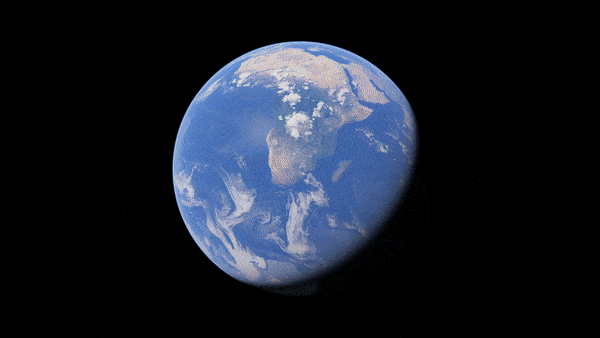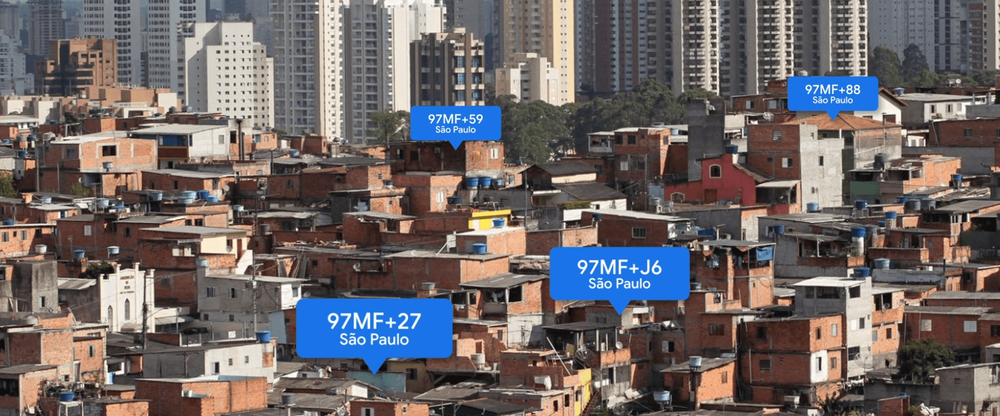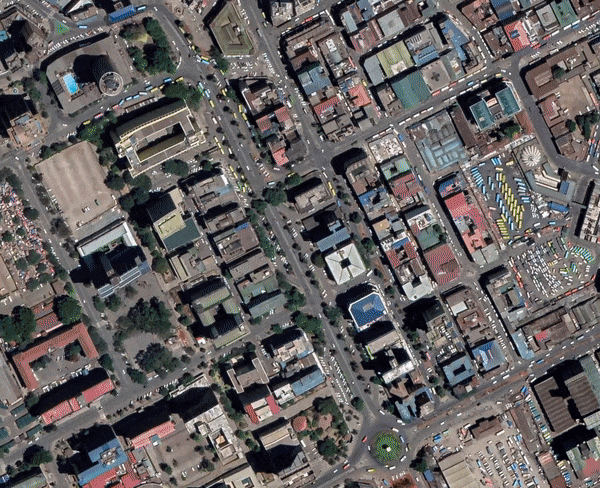Author Archive
How we’re giving everyone, everywhere an address
by David Martin on Sep.30, 2020, under 3D Models, Argentina, Australia, Brazil, California, Denmark, England, Germany, Google Earth News, Google Earth Tips, Google Sky, Google maps, Hawaii, Indonesia, Ireland, Italy, Japan, Kenya, Mexico, Natural Landmarks, Netherlands, Sightseeing, Street Views, USA
We’ve gone behind the scenes to look at how we map the world, use imagery to capture the meaningful details around us, and all the ways contributed content and AI make Google Maps a more helpful tool—from planning your trip to deciding where to go.
Today, we’ll dive into how we are working to make sure everyone in the world has access to an address using our free, open-source digital address-making system called Plus Codes.
Addresses help us find people and places, and they help people and things find us. An address is also necessary to secure official documents and do things like open a bank account. However, several billion people either don’t have an address at all or they have one that doesn’t accurately identify the location of their home or business. Plus Codes offer a simple but powerful solution. Already, Google Maps provides millions of directions each month to people looking up a place with a Plus Code and this volume is rapidly growing.
So what are Plus Codes?
Plus Codes use latitude and longitude to produce a short, easy-to-share digital address that can represent any location on the planet. For example, the Plus Code “W2GJ+JQ, Johannesburg” represents the main entrance to the Google office in Johannesburg, South Africa. Put this code into Google Maps or Google Search and you’ll be brought right to our front door in Johannesburg.

The Plus Code address for Google's Johannesburg office is W2GJ+JQ, Johannesburg
Helping people get on the map
A Plus Code can easily be used where no addresses, street names or even streets exist today. Someone in an area without addresses no longer needs to give out complicated instructions to find a home or workplace—like “drive to the community center, turn left and look for the blue house with the red roof.” Now, they can simply share a short Plus Code and it immediately works.
Businesses and services that rely on navigating to peoples’ homes can simply enter the Plus Code into Google Maps and get directions instantly. Emergency services and humanitarian groups can more easily find people who need aid, locate people for vaccine programs and easily track health programs all with Plus Codes.
Generating Plus Codes
In the absence of street names and accurate addresses, how are Plus Codes created?
First, we divide the world along latitude and longitude lines to form a simple grid. The grid is labelled along the X and Y axis using a specific set of 20 alphanumeric characters {2,3,4,5,6,7,8,9,C,F,G,H,J,M,P,Q,R,V,W,X}. You’ll never see a vowel or characters like “1”, “L” and “l” in a Plus Code as we want to avoid confusion over the characters when writing them down and prevent any accidental word formations. And by using a carefully selected set of alphanumeric characters, Plus Codes can be used by anyone no matter what language you speak.
Each grid cell on the digital globe is then further divided, the X and Y-axes again labelled with the 20 characters above and the process repeated to build out a full Plus Code. In the case of the Google Johannesburg office this would result in a full Plus Code of “5G5CW2GJ+JQ”.
Since a full Plus Code might not be easy to recall, you can conveniently drop the first four characters of the code if you know the area you are in, just as we drop area codes on telephone numbers when already in the area. In this case, if I know I am in Johannesburg the Plus Code for the Google office can be shortened to “W2GJ+JQ, Johannesburg.”
Depending on the number of characters included in the code after the ‘+’ sign, the code can be even more specific. For example a Plus Code with two characters after the ‘+’ sign represents an area of approximately 13m x 13m, about the size of a half a basketball court. Adding an additional character reduces this size to approximately 3m x 3m, providing an exact address for a sidewalk vendor who may not even have a storefront.
And this might go without saying, but Plus Codes are named after the ‘+’ sign that is one of their key characteristics. This sign is used to help people and our digital applications recognize the code as a Plus Code.

Plus Codes in São Paulo, Brazil
Community addressing
Providing conventional (non-digital) addresses to communities at scale can be complicated and expensive for local and national governments, often taking years to set up and become useful. With Plus Codes, a village, town, city or even country can quickly and efficiently set up an addressing system. And unlike conventional addressing projects, once a Plus Code address is created it is immediately usable on platforms such as Google Maps and anywhere else that recognizes Plus Codes both online and offline. This means that new services (both digital and non-digital) are more readily available to traditionally underserved communities that lack proper addresses.
The power of Plus Code addresses
While there are other digital address-making solutions, they’re often proprietary or must be commercially licensed, which can mean unnecessary costs, complications and longer term uncertainty for businesses and governments. These solutions also have challenges with universal recognition and adoption, as they are generally not open source or freely available.
Here’s a taste of the positive impact we’ve seen Plus Codes deliver.
We recently introduced a refreshed Plus Codes icon to make it more recognizable. If you’d like to learn more about Plus Codes, how to use them and how they’re being used, visit maps.google.com/pluscodes.
No address? No problem. Share your location using Plus Codes
by David Martin on May.29, 2020, under 3D Models, Argentina, Australia, Brazil, California, Denmark, England, Germany, Google Earth News, Google Earth Tips, Google Sky, Google maps, Hawaii, Indonesia, Ireland, Italy, Japan, Kenya, Mexico, Natural Landmarks, Netherlands, Sightseeing, Street Views, USA
For many of us, it’s easy to take addresses for granted. We order products online, and they show up at our doorstep. In an emergency, we give our address to an ambulance or fire truck, and they quickly get to us. But what happens when you don’t have an address and you need to direct someone to your current location?
More than 2 billion people on the planet—about 25 percent of us or more —either don’t have an address or have an address that isn’t easy to locate. To tackle this challenge, we launched Plus Codes in 2015. Plus Codes are simple, easy to use digital addresses derived from latitude and longitude coordinates. They can be used to uniquely identify any location, from a rural home out on a prairie to a small shop stall on a nameless street.
Today we’ve made it easier for anyone with an Android device to share their location using Plus Codes in Google Maps. People who use Google Maps might be familiar with the blue dot that represents their current location. Simply tap the blue dot to get a Plus Code for your current location that can be shared with others as easily as giving them a phone number.

Plus Codes: free, digital address for anywhere
A Plus Code is a simple alphanumeric code which can be combined with a locality (for example: FWM8+V9, Ibadan, Nigeria). They look like a regular address, but with a short code where a street name or number would be. Beyond using the blue dot, you can also find the Plus Code for a location by tapping and holding the map to drop a pin at a location you want a Plus Code for.
Plus Codes are searchable on Google Maps and even Google Search, meaning everywhere on the planet can now be uniquely identified.
These digital location identifiers are free to use, available offline and can be printed on paper, posters and signs. The technology to generate Plus Codes is also open source, which means the technology is easy and free to use, so anyone can see how the technology works and develop their own applications for any use case.

A helpful tool for emergency and crisis situations
Plus Codes can be especially helpful for people and organizations in emergency and crisis response scenarios. If you’ve ever been in an emergency, you know that being able to share your location for help to easily find you is critical. Yet in many places in the world, organizations struggle with this challenge on a daily basis.
With Plus Codes, not only can people share their location quickly even without an address, but they can now do so by simply opening up Google Maps and tapping on the blue dot to view, copy and share their Plus Code location. A Plus Code can then be entered into Google Maps to help locate and navigate to that location.
Digital locations through Plus Codes means that everywhere now has an easily identifiable location, saving time and getting resources there when it really matters. Not having an address should no longer be a barrier to easily sharing your location with service providers, guiding them to you when you most need them.
Download the latest version of the Google Maps Android app over the coming weeks to try out the new update.
